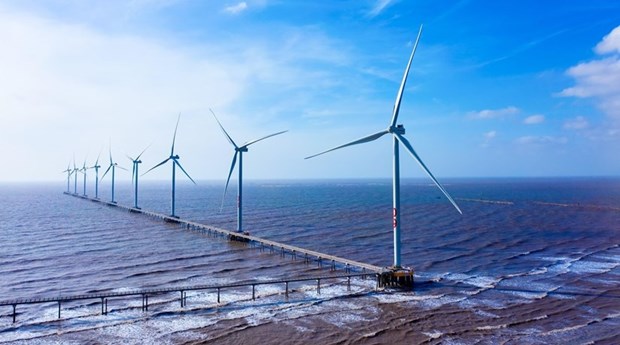Japan’s Nikkei Asia newspaper today published an analysis highlighting how “Vietnam’s offshore wind power is attracting an influx of foreign investment.”
According to that article, Japanese and European companies are making big moves in Vietnam’s offshore wind sector to take advantage of the South East Asian country’s renewable energy momentum.
In September 2022, the Japanese corporation Sumitomo announced the deployment of an offshore wind power generation project in the Indochinese country. That was followed by a survey in December to study cable routes, as the company plans to bring a wind farm with a capacity of 500 megawatts to one gigawatt into operation by 2030.
For its part, Renova, which specializes in renewable energy, established a development base in Vietnam. In April, it signed a memorandum of understanding on offshore wind development with the Vietnam Oil and Gas Group to build a two-gigawatt plant in the future. It is also considering developing a floating offshore wind power plant, whose turbines would float on the ocean surface.
The company is involved in renewable energy projects in other countries such as South Korea and the Philippines, but has dedicated the largest number of staff to Vietnam. The company considers the country “one of the most important” for the development of renewable energy, according to Kei Saiki, co-head of the global business division.
Among European companies, Danish Orsted, the world’s largest offshore wind firm, leads the Vietnamese market. The company began considering a project in Vietnam in 2020 when it signed a memorandum of understanding with the T&T group a year later to build a wind power plant.
Orsted has already launched initiatives such as workshops that bring together component manufacturers and other local suppliers, and plans to co-operate with T&T on a power plant with a total capacity of two gigawatts in 2030.
Nikkei Asia said strong winds off Vietnam’s southern coast make it one of the best places in the region to develop wind power. Additionally, a net-zero carbon emissions commitment by mid-century, coupled with a pressing power generation shortfall, make Vietnam an attractive destination for renewable energy infrastructure investments.
Specifically, according to a map published by the World Bank Group (WBG) and some other organizations, the wind speed in some areas off the southern coast of Vietnam can exceed 10 meters per second, much more than eight meters per second, the rate considered viable for the development of a wind power plant.
In Southeast Asia, the winds are strong in Vietnam and the Philippines, while the winds around Malaysia and Indonesia are generally weaker.
For this reason, Vietnam is seen as “one of the best places in Asia for offshore wind energy,” according to Orsted’s Sebastian Hald Buhl.
With a population of approximately 100 million, Vietnam is experiencing rapid economic growth and an increasing concentration of foreign manufacturers. However, power generation infrastructure has not yet kept pace with development, which could lead to chronic power shortages in the near future.
At the 26th United Nations Climate Change Conference (COP26) in Glasgow (UK) in 2021, Vietnamese Prime Minister Pham Minh Chinh announced plans to achieve net zero emissions by 2050. In the medium to long term, it is necessary to secure power sources to replace coal, which accounts for approximately 50 percent of all power generation in the country.
In that context, according to Nikkei Asia, offshore wind power is expected to play an important role in the Vietnamese government’s power generation plans.
Wind power currently accounts for around 5 percent of the country’s electricity generation capacity, but the government plans to increase it to around 30 percent by 2050, he noted.
VNA


